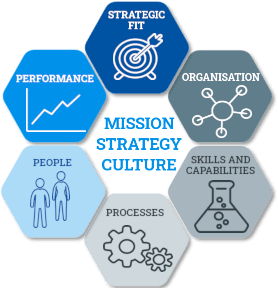What can you learn from CFIA ingredient innovators?
My visit to the Rennes CFIA salon in March 2022 provided me with insights into how & why different food ingredient companies innovate. Through talking with a range of exhibitors, I found a large diversity of approaches which seem to have developed as a function of the history, context and culture of the company. Truly, there is no “one size fits all” approach. Find out what my key take-outs were from these fascinating conversations.
It’s good to talk
Talking with people about Innovation is an enriching experience. I admit that I’m fascinated by the topic anyway, but every conversation I had with the handful of exhibitors I talked to was open, friendly and full of insights. Innovation is a subject that brings its own positive energy. I won’t mention the names of the companies who were kind enough to grant me some of their precious time, but in general they were small to medium size food ingredient companies.
Small can be beautiful
You can do a lot with a little – small teams are driving real product innovation very nicely. Yes, I heard several times that “we do what we can with the means we have” which indicates that small structures are conscious of limited resources, but you do not need huge R&D and marketing departments. You just need enough of the right skills to get the job done. By the way, this reinforces studies that have shown no strong correlation between R&D effort and innovation success.

“Innovation has nothing to do with how many R&D dollars you have. When Apple came up with the Mac, IBM was spending at least 100 times more on R&D. It’s not about money. It’s about the people you have, how you’re led, and how much you get it.” – Steve Jobs, Fortune Magazine, 1998.
Culture counts for a lot
One key factor that determines how companies innovate is their underlying culture. I encountered two examples where the founders of the company were real innovation champions. These companies see innovation and risk-taking as a natural part of what they do. It permeates the company DNA and goes a long way to making the right environment for effective innovation delivery. Employees feel empowered to do new things and are guided by clear principles that are demonstrated on a daily basis by their leaders.
Communicate to innovate
Good communication between different functions (R&D, Marketing, Industrial etc..) also appeared as a differentiator. It came up several times and was usually followed by a mention of proximity. Certainly, ensuring teams are physically close really helps team-working and small companies based on one site only have an advantage in this. Larger, multi-site companies have to work harder at building proximity and communication. It gets more difficult for multi-national, multi-cultural organisations.
The source of innovation
I was reassured when I heard that customers and market trends were at the origin of many innovations. On top of this, I found out that the “creative technical expert” approach is also alive and kicking. I heard more than once that someone in the company comes up with new ideas based on a mixture of creativity and technical expertise. I also heard about creative/inventive founders, the leaders who generate a high volume of new ideas on a daily basis. This has a strong positive impact on the company innovation culture, but let me give you a note of caution: selecting the best ideas and stopping the weaker ones can be difficult when they all come from the boss.
Innovate to demonstrate
All the companies I spoke to were innovating to create value through selling their new products or services. I also encountered a couple of examples where companies created new products to demonstrate a new technical capability they had. The idea here is not to sell the new product as such, but to kick-off projects with potential customers by inspiring them with new possibilities based on the concept.
Innovation as a service… and service as innovation
Advising customers on how to use ingredients has long been part of the BtoB food ingredient supplier’s role. One company I spoke with does only this. They spend their time finding new applications for their ingredients, rather than developing new ingredients at all. Another company has naturally evolved into a pivotal position where they advise customers and the people who supply equipment to the customers. They advise their customers how to use their ingredients and they collaborate with their customers’ equipment suppliers to help them design process machinery adapted to their ingredients too. A great example of how key expertise in functional ingredients combined with a partnering approach adds even more value.
Timing is everything
Ever developed a product that was “before it’s time”? Don’t give up! Some of the successful new products of today were ideas that were initially developed and prototyped several years ago. For example, I discovered a product that has doubled its sales every year for the last 3 years which was originally launched a decade ago. It struggled to build sales for years until it happened to be absolutely on market and consumer trend and then sales took off. Another company has a successful new product that was created more than 10 years ago. It was never commercialised, but the company did not forget about it and (more importantly) they realised that this old invention could be used to respond quickly to an emerging market need.
Structure for start-ups
I had a surprising conversation with a start-up. We talked about structure and I naively imagined that this tiny team of talented graduates would be ultra-informal in how they organise their themselves. Well, they’re not. They have adopted a lot of tools and methods that their investors have advised them to use. So much so, that my interlocutor said they were more structured and disciplined than some significantly bigger companies they have worked in. It seems you are never too small to benefit from some structure!
Summing it up
No two companies I spoke with are innovating in the same way. How they innovate seems to be strongly linked to their culture and the resources they have available. A small team is no barrier to effective innovation and smaller, technically strong ingredient suppliers can become key partners to much larger companies (and not only customers). But don’t forget your old ideas. In fact, look seriously at making sure you are able to quickly and easily review old projects that could accelerate and enable new product launches. Finally, keep talking about innovation, there’s lots to share an much more to learn!
Want to know more?








